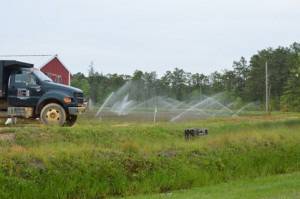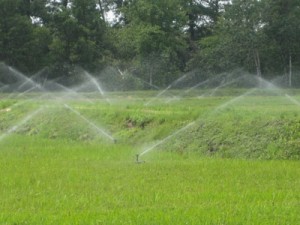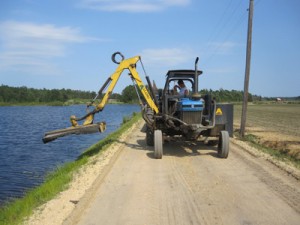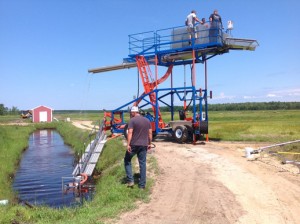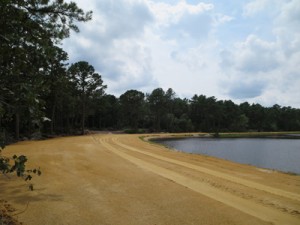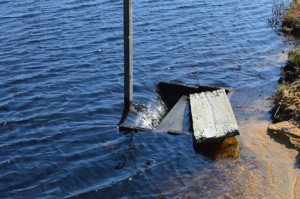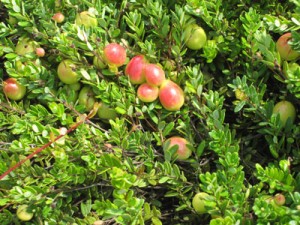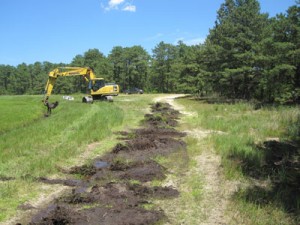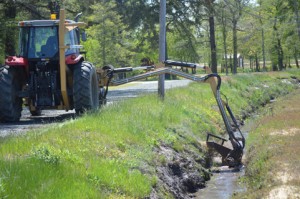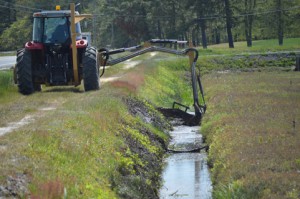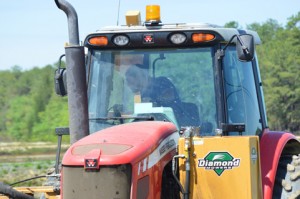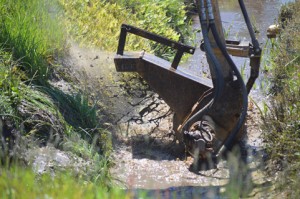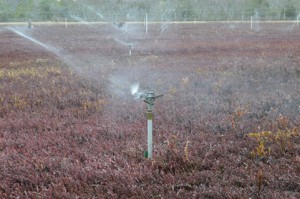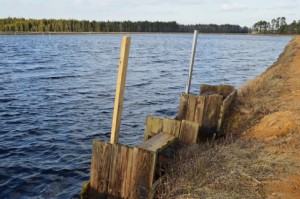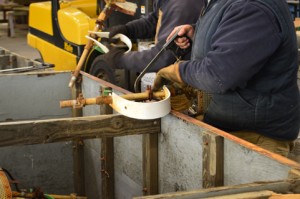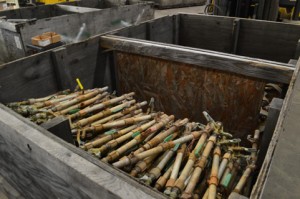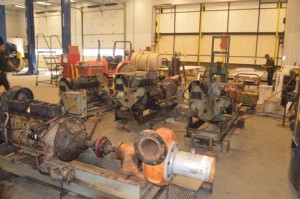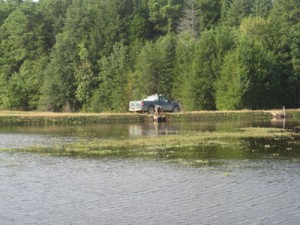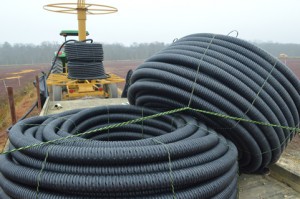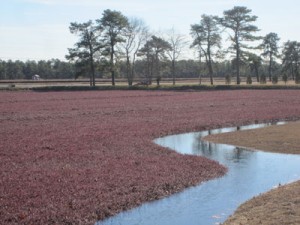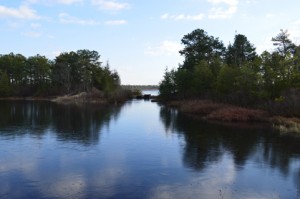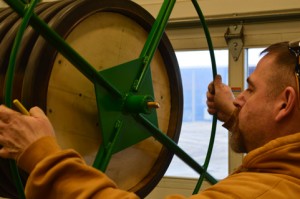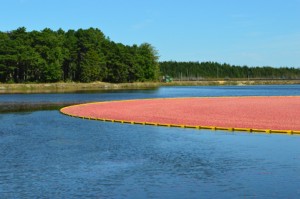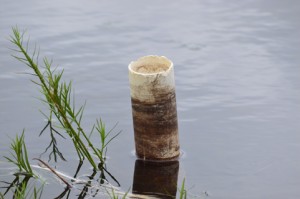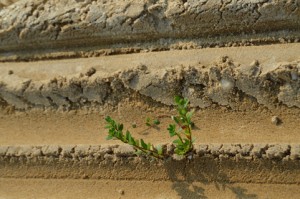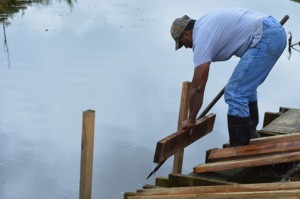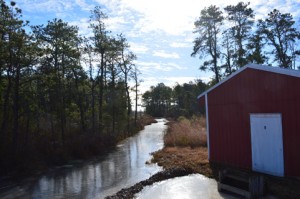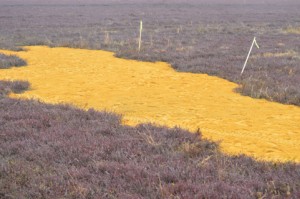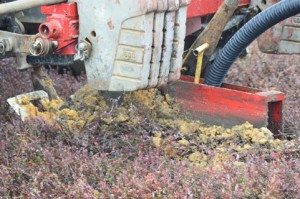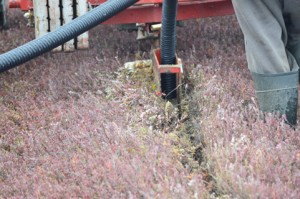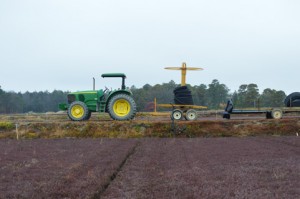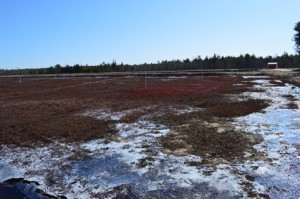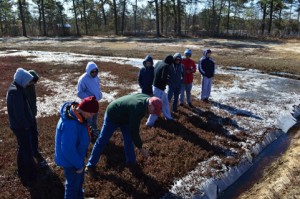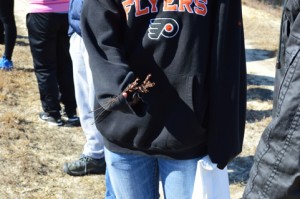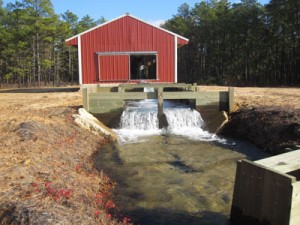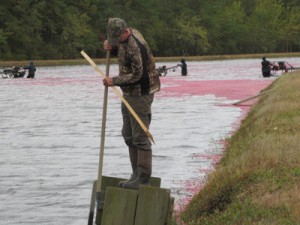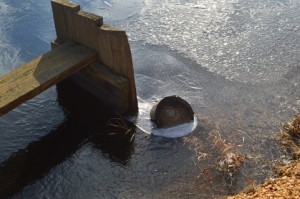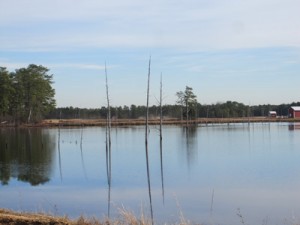When we talked about pre-harvest prep a couple of weeks ago, COO Bryan vonHahmann discussed how everything now becomes more critical as we enter the pre-harvest interval, in particular the final fertilizer application that helps the plants through the winter.
Team members Tim Bourgeois and Juan Carlos Gonzalez-Perez started those applications this week, and it’s going well. “This type is usually applied via fertigation,” Tim says. Fertigation, a process where plant nutrients are applied through irrigation systems, has many benefits, such as increased nutrient absorption by plants and reduced water consumption due to the plant’s increased root mass’s ability to trap and hold water. “We’re taking the truck around from pump to pump, starting each system, looking for any leaks. We’ll fix any, if we find them, then repair any clogged sprinkler nozzles before we start so each area gets the coverage it should.” Typically, a bog should be done two to three weeks prior to harvest, so Tim and Juan Carlos are mirroring the harvest schedule order as they start the applications. Weather can also be a concern: “The wind will blow falling water away from where it needs to be,” Tim says. “If the breeze is under 7 to 8 mph we’re in good shape; otherwise it’ll go on top of the dam, which is a waste. Yesterday we could go till noon, but the day before we had to quit by 9:30 because the wind was picking up.”
The rest of our team is working hard to get the farm ready, as well. “We’ve been mowing like crazy,” says Matt Giberson. “We’re running six mowers, including two on loan from Rutgers. It was really generous of them to do that, and it means we’ve been able to cover a lot more ground.” Mowing is necessary to finish prior to harvest because the grass can get really thick on the edge of the dam, which makes it harder to get the berries out.
In addition to all of the grounds maintenance, the second bog side cleaner arrives today. “We have to unload that and put everything together, which can get a little involved,” Matt says, “and then we need to get it ready for a practice run on Wednesday or Thursday to make sure it’s good to go.” For the practice run, the team will be at the young beds at Old 11. “It’s a second year bed, so there’s not much fruit,” Matt explains. “We’re not expecting great fruit from that, because it’s not really ready, which makes it ideal for a trial equipment run.” Additional ongoing maintenance includes clearing the weeds, especially by the pump houses, crowning dams, and working on the wider turnarounds. “Now that we have a second bog side cleaner, we’re going to need more room, so Steve [Manning] is out there with a crew widening the dams at Red Road and Bishop’s Mill as well as the top of the property at Rancocas, including gate extensions to make sure we can make the turn with no problems. It’ll help with sanding in the wintertime, too.”
Water is a big concern going into the autumn. “We haven’t had any rain,” Matt says. “We’ve been running the wells off and on every day, and with the irrigation you lose some on the reservoirs. The home farm is okay, though we’re hoping for a good rain. Sim Place is lower because that big reservoir is so huge it takes a while to fill up. And the weather between here and there can vary a lot; we can get a shower on the home farm while Sim Place doesn’t get anything. All the boards have been in for weeks, but haven’t taken any out so we can maintain everything. We’re trying to save water where we can, but we’d love to see a good rain before we start, especially at Sim Place.” So far, though, he’s optimistic: “The fruit’s looking good! Some of the numbers I’m seeing look good, and I can’t wait to see how a few of our newer bogs do this year.”

